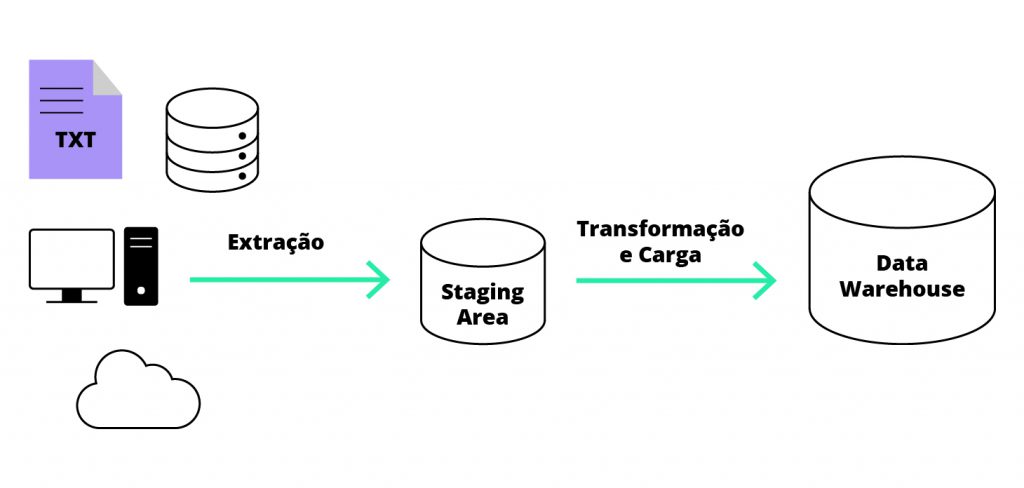【医疗数据分析中的决策树与Boosting】:关键角色与应用探索
发布时间: 2024-09-05 01:31:37 阅读量: 108 订阅数: 40 


【java毕业设计】智慧社区教育服务门户.zip

# 1. 决策树与Boosting在医疗数据分析中的重要性
在现代医疗领域,数据科学已经成为了支持临床决策和提高患者治疗效果的关键技术。医疗数据的复杂性和多样性要求算法不仅要高效而且还要准确。决策树和Boosting作为两种强大的机器学习技术,它们在处理医疗数据分析方面扮演着重要的角色。
首先,决策树提供了一种直观的方式来表示知识,并且在分类和回归任务中表现优异。它通过构建树状结构模型,能够清晰地展示不同特征对决策的影响。由于其易于理解和解释的特性,决策树在医疗领域获得了广泛应用,如患者风险评估和疾病预测等。
Boosting算法则是通过将多个弱学习器(例如决策树)组合起来,形成一个强学习器,其核心思想是通过顺序的方式逐步改进模型的性能。Boosting的集成学习方法在提高诊断预测准确性方面显示出显著优势,使得它在医疗数据分析中成为不可忽视的工具。
总体来看,决策树与Boosting技术的结合使用,能够显著提升医疗数据的分析能力和决策支持系统的效能,从而在提高患者治疗效果和优化医疗资源分配方面发挥关键作用。
# 2. 决策树理论及其在医疗数据分析中的应用
### 2.1 决策树的理论基础
#### 2.1.1 决策树的构建过程
决策树是一种流行的机器学习模型,用于分类和回归任务。它通过一系列的问题来划分数据集,以最优化每个子集的纯度。在构建决策树的过程中,关键在于选择最佳的特征进行分裂,以最小化信息熵或最大化信息增益。信息熵是度量数据集纯度的方式,而信息增益则是熵减少的量,代表通过特征分裂带来的数据纯度的提高。
在构建过程中,首先需要选择一个特征来分割数据集。最常用的方法是基于信息增益选择最佳分裂特征。例如,在医疗数据分析中,可能会优先选择那些能够最大程度区分病人健康状况的特征,如血压、胆固醇水平或症状严重程度。
具体来说,构建决策树的步骤如下:
1. **选择最佳特征**:计算每个特征的信息增益,选择信息增益最大的特征作为当前节点的分裂标准。
2. **创建节点**:根据选择的最佳特征划分数据集,为每个分裂点创建子节点。
3. **递归分裂**:对每个子节点重复以上步骤,直到满足停止条件(如达到最大深度、节点中数据量小于阈值或纯度已无法提高)。
4. **剪枝**:为了避免过拟合,通过剪枝方法(预剪枝和后剪枝)去除不必要的节点,简化树结构。
**代码实现**:下面是一个简单的Python代码示例,使用scikit-learn库构建决策树模型。
```python
from sklearn.datasets import load_iris
from sklearn.tree import DecisionTreeClassifier
from sklearn.model_selection import train_test_split
from sklearn.metrics import accuracy_score
# 加载数据集
iris = load_iris()
X, y = iris.data, iris.target
# 划分训练集和测试集
X_train, X_test, y_train, y_test = train_test_split(X, y, test_size=0.2, random_state=42)
# 构建决策树模型
clf = DecisionTreeClassifier(random_state=42)
clf.fit(X_train, y_train)
# 预测测试集
y_pred = clf.predict(X_test)
# 计算准确率
accuracy = accuracy_score(y_test, y_pred)
print(f"Model Accuracy: {accuracy * 100:.2f}%")
```
在这段代码中,我们首先导入了必要的库和函数,加载了iris数据集,并将其分为训练集和测试集。接着使用`DecisionTreeClassifier`创建了一个决策树模型,并在训练集上进行了拟合。最后,在测试集上进行了预测,并计算了模型的准确率。
#### 2.1.2 决策树的分类准则和剪枝技术
分类准则决定数据在节点上的分裂方式。常用的分类准则是信息增益、增益率和基尼指数(Gini Index)。增益率是对信息增益的改进,它考虑了特征的个数,以避免偏好具有多个值的特征。基尼指数是另一种衡量数据不纯度的方法,它基于概率原理,与信息增益类似,旨在分裂数据集使其纯度增加。
剪枝是决策树中非常重要的一个环节,它通过去除树中的某些分支来减少过拟合。有两类剪枝方法:预剪枝(pre-pruning)和后剪枝(post-pruning)。
预剪枝涉及在树的构建过程中提前停止分裂,通过设置树的最大深度、最小分裂样本数等参数控制树的增长。而后剪枝则是在树构建完成后,通过评估节点的不纯度降低度来决定是否应该剪掉一些分支。预剪枝较为简单,但可能会导致欠拟合;后剪枝虽然计算复杂度高,但通常效果更好。
**代码逻辑分析**:在实际应用中,选择合适的分类准则和剪枝技术对于构建一个稳定且泛化能力强的决策树模型至关重要。在scikit-learn中,可以通过决策树分类器的参数来调整这些策略,例如:
```python
# 使用基尼指数分类准则,并设置预剪枝参数
clf = DecisionTreeClassifier(criterion='gini', max_depth=3, min_samples_split=5, random_state=42)
```
在上述代码中,我们通过设置`criterion='gini'`参数指定了使用基尼指数作为分裂标准,`max_depth=3`限制了树的最大深度为3,`min_samples_split=5`要求每个节点至少包含5个样本才能继续分裂,这样可以防止树过度复杂。
### 2.2 决策树在医疗数据分类中的实践
#### 2.2.1 患者数据的分类与预测
在医疗数据分析中,决策树可以用来根据患者的临床记录、实验室结果和其他相关特征对患者的健康状态进行分类和预测。例如,可以通过决策树模型来预测患者是否患有某种疾病,或对疾病的严重程度进行分类。
构建用于医疗数据分类的决策树模型通常涉及以下步骤:
1. **数据准备**:收集并清洗数据,包括患者的基本信息、病史、检查结果等,并将其转化为模型能够处理的格式。
2. **特征选择**:选择那些对预测任务最相关的特征,以减少模型复杂性和提高预测性能。
3. **模型构建**:使用选定的特征构建决策树模型,并进行训练。
4. **模型评估**:通过交叉验证和各种评估指标(如准确率、召回率、F1分数等)评估模型性能。
5. **临床应用**:将经过充分验证的模型部署到临床环境中,辅助医生进行诊断和决策。
在实际应用中,患者的诊断信息可能包括性别、年龄、血压、血糖水平、胆固醇水平等。通过这些信息,决策树模型能够学习出与特定健康状况相关的模式,并在新患者的数据上进行有效预测。
**代码实现**:下面是一个简化的例子,展示如何使用Python和scikit-learn构建决策树模型来进行医疗数据分类。
```python
from sklearn.datasets import load_breast_cancer
from sklearn.model_selection import train_test_split
from sklearn.tree import DecisionTreeClassifier
from sklearn.metrics import classification_report
# 加载乳腺癌数据集
cancer = load_breast_cancer()
X, y = cancer.data, cancer.target
# 划分训练集和测试集
X_train, X_test, y_train, y_test = train_test_split(X, y, test_size=0.3, random_state=42)
# 创建决策树分类器并训练模型
clf = DecisionTreeClassifier(random_state=42)
clf.fit(X_train, y_train)
# 预测测试集
y_pred = clf.predict(X_test)
# 输出分类报告
print(classification_report(y_test, y_pred))
```
在这个例子中,我们加载了乳腺癌数据集,并将其分为训练集和测试集。使用`DecisionTreeClassifier`构建了一个决策树模型,并在训练集上进行了训练。然后在测试集上进行了预测,并输出了一个分类报告,该报告包括了精确率、召回率、F1分数等指标,这些指标帮助我们评估模型在不同类别上的预测性能。
#### 2.2.2 特征选择与数据预处理
在构建医疗数据分类的决策树模型之前,需要进行有效的特征选择和数据预处理。良好的特征选择能够降低模型的复杂度,减少过拟合的风险,并提高预测精度。数据预处理步骤包括数据清洗、填补缺失值、特征标准化等。
在医疗数据分析中,特征选择应该基于临床知识和统计测试。例如,一些特征可能由于测量误差或变异性太大而不适合用作预测变量。另一方面,某些特征如肿瘤大小、淋巴结状态等可能直接与某些类型的癌症相关。
数据预处理步骤如下:
1. **数据清洗**:移除重复记录、纠正数据输入错误等。
2. **处理缺失值**:应用插补技术,如使用平均值、中位数或利用模型预测缺失值。
3. **特征编码**:将非数值型特征转换为数值型特征,常用的编码方法包括独热编码(One-Hot Encoding)和标签编码(Label Encoding)。
4. **特征标准化**:对数值型特征进行标准化处理,以便将不同量级和单位的特征置于同一量级上。
**代码实现**:下面的代码展示了如何在scikit-learn中对数据进行预处理,包括编码和标准化。
```python
from sklearn.preprocessing import StandardScaler, ***
***pose import ColumnTransformer
from sklearn.pipeline import Pipeline
# 特征预处理的步骤
numeric_features = ['age', 'bmi', 'children']
numeric_transformer = Pipeline(steps=[
('scaler', StandardScaler())
])
categorical_features = ['sex', 'smoker', 'region']
categorical_transformer = Pipeline(steps=[
('onehot', OneHotEncoder(handle_unknown='ignore'))
])
# 构建ColumnTransformer进行预处理
preprocessor = ColumnTransformer(
transformers=[
('num', numeric_transformer, numeric_features),
('cat', categorical_transformer, categorical_features)
])
# 在预处理后应用决策树模型
***pose import make_column_transformer, make_column_selector
preprocess_
```
0
0





